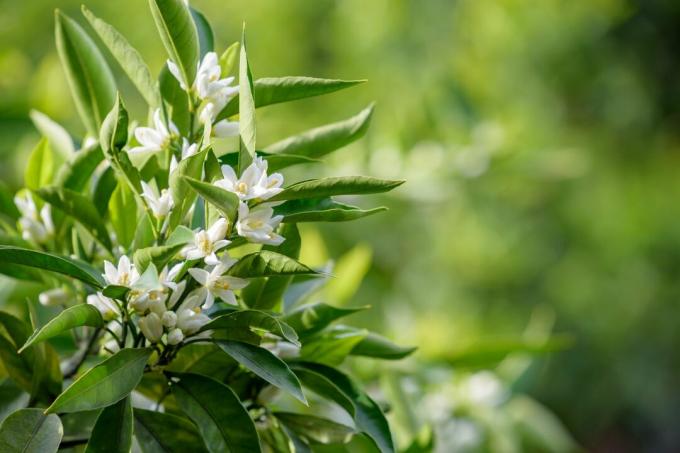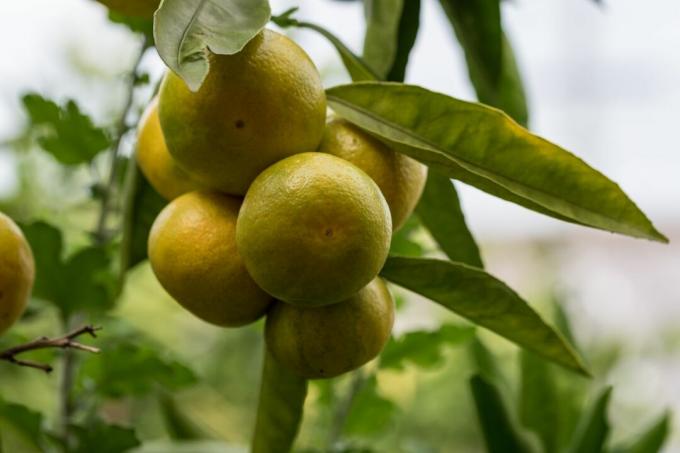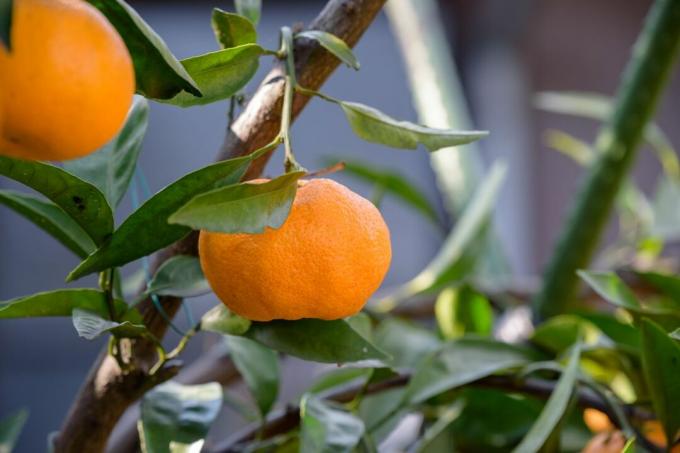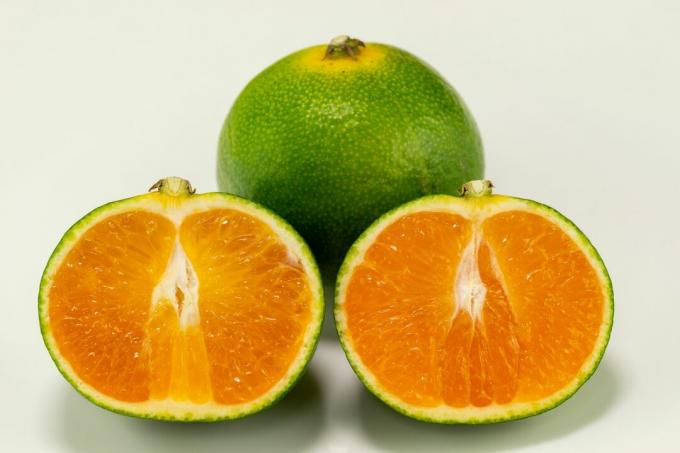Fresh satsumas directly from Germany? With your own small satsuma tree, this is possible and does not require much skill, space or material.

Anyone considering buying a citrus tree should consider the relatively unknown Satsuma (Citrus reticula subsp.unshiu) must be considered. This is because satsumas differ from clementines and tangerines in that they are more cold-tolerant and the fruits are almost always seedless.
contents
-
Satsuma: origin and characteristics
- Do satsumas have seeds?
- What is the difference between satsumas and clementines?
- Planting satsuma: location and procedure
- The right care
- Are Satsumas Hardy?
- Harvest, taste and ingredients
Satsuma: origin and characteristics
Satsuma probably comes from Japan, where, according to the latest findings, it emerged from a random crossing of two mandarine varieties and a backcross. Therefore, the former classification as a separate species (Citrus unshiu) obsolete. Today, satsumas are considered a variety of mandarine (
Citrus reticula) and grown in subtropical regions worldwide, with the largest growing area for satsumas still being Japan. But the fruits are now also being imported from Spain, America and Africa.The evergreen tree, which has almost no thorns, remains relatively low throughout its life. The maximum height of around 2 m is only reached after many years when growing in pots in our latitudes. The small, white flowers that appear in abundance in spring are particularly beautiful to look at. Relatively large, orange satsuma fruits develop from these, which are harvested from October. With satsumas, it can happen that the fruit is already ripe, even if the skin is still green. As the fruit ripens, the skin often separates slightly from the flesh.

Do satsumas have seeds?
In the vast majority of cases, satsumas do not have seeds, since the fruit can also develop from unfertilized flowers. Very rarely it can happen that one finds a mostly light green nucleus in one of the segments.
What is the difference between satsumas and clementines?
At first glance, there is usually no difference between satsumas, tangerines and clementines. However, as there are many on closer inspection Differences between clementines and tangerines are also satsumas stand out from the other two types. Unlike tangerines, for example, satsumas have no seeds. Satsumas differ from clementines in that they are slightly larger, sweeter and have a thinner skin. In addition, they often still have a green skin when they are ready to eat.

Planting satsuma: location and procedure
Satsumas should only be cultivated in pots here. They are relatively cold-tolerant for citrus fruits and can even tolerate short-term frost, but you shouldn't expect too much from them. When choosing the soil and location preferences, you can use the information on other citrus fruits as a guide. We will go into this in more detail in our article with tips on how to Planting clementines a. Our peat-free, for example, is a suitable substrate for your Satsuma Plantura organic universal soil, which you mix with sand and clay granulate one sixth each. If that is too time-consuming for you, you can use a high-quality citrus soil that meets these requirements. However, the disadvantage of ready-mixed citrus soils is that they often contain peat, which is harmful to the climate.
At a glance: planting satsuma
- Cultivation in pots in any well drained, moderately nutritious substrate.
- Site warm, sunny, sheltered from the wind in summer and cool (5 to 10 °C) and bright in winter.
- Every 2 to 3 years, around April, you should repot your satsuma tree.

The right care
When it comes to care, the many citrus species differ little. For helpful grooming tips, see our article on tangerine trees. In general, it can be said that a satsuma tree needs a lot of water, but does not tolerate waterlogging at all. Therefore, water regularly and cautiously and make sure that excess water can drain off easily.
A pruning of the satsuma is not absolutely necessary, but can be done in early spring, i.e. around March, to shape it.
Since satsumas are cultivated in pots, they depend on an external supply of nutrients. For example, our primarily organic Plantura Organic Citrus & Mediterranean Fertilizer provides your plants with everything they need. In addition to nitrogen and potassium, this also includes, for example, iron in a readily available form to prevent a deficiency in this micronutrient. This is common in satsuma and other citrus plants.
Tip: Did you know that our Citrus & Mediterranean fertilizer contains almost no phosphorus, even though it is an essential plant nutrient? This is because, for reasons of sustainability, we are involved in protecting the world's scarce phosphorus deposits. The phosphorus needs of your citrus crops are met via the substrate, which requires occasional repotting. In any case, this is good for your plants, because every substrate sags a little over time and then offers poorer growth conditions. Our compost soils are rich in phosphorus. If for some reason you are unable to repot your satsuma, we recommend applying a phosphorus based fertilizer such as ours once a year Plantura organic flower fertilizer to use.
Are Satsumas Hardy?
Even though they are relatively cold-tolerant for citrus trees and adult plants even tolerate short-term frost down to - 8 °C, satsumas are not hardy in our country. That's why you should bring your satsuma tree indoors during the cold season. In general, you can refer to the general procedure at Overwintering lemon trees orientate. The easiest way is to overwinter a satsuma tree in a light and cool place at around 10 °C. If the temperatures warm up again in spring, the Satsuma can go outside again from around May. But beware, the young trees are still particularly susceptible to cold when they are fresh after wintering.

Harvest, taste and ingredients
If you have your own satsuma tree, you can harvest the first fruits from around October. But don't worry, even if the tree has been brought indoors, the fruits will still ripen, so that you can harvest almost the entire winter. The taste of the healthy satsuma fruits is reminiscent of tangerines. However, they are slightly larger and cuter. Nevertheless, satsumas only have a calorie content of 35 to 50 kcal per fruit.
When are Satsumas in season? Satsumas are ready to harvest from late autumn. This means satsumas are in season from October if they come from the northern hemisphere.

Southern flair also contributes nectarine into your garden. In a sunny, sheltered location, it can even be cultivated outside all year round in climatically favorable locations.

